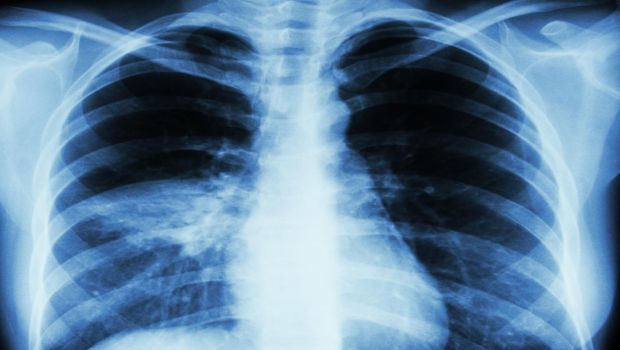Greater Collaboration Between ICU Nurses and Physicians May Minimize VAP Risk
Greater collaboration between ICU nursing and medicine could help to minimize ventilator-associated pneumonia (VAP), according to a study presented at the ATS 2016 International Conference.


This image shows ventilator-associated pneumonia or VAP. Courtesy of ATS
Greater collaboration between ICU nursing and medicine could help to minimize ventilator-associated pneumonia (VAP), according to a study presented at the ATS 2016 International Conference.
"Our results suggest that the nurse work environment is a significant predictor of VAP while controlling for ICU physician staffing," said lead study author Deena Kelly Costa, PhD, RN, from the University of Michigan School of Nursing and the Institute for Healthcare Policy and Innovation at the University of Michigan in Ann Arbor, Michigan.
Two ICU characteristics--a better nurse work environment and a closed ICU physician staffing model (where an intensivist leads and manages care of all patients)--have been independently associated with lower mortality, the study authors wrote. However, it has not always been clear how these factors together may influence VAP.
Investigators conducted a secondary unit-level analysis of critical care nurse survey data from 25 ICUs collected in 2005 and 2006. Investigators modeled independent and joint effects of the nurse work environment and ICU physician staffing on VAP using a Poisson multivariable regression model. Investigators also tested an interaction between the nurse work environment and ICU physician staffing on VAP.
From the 25 ICUs, 462 of 866 nurses (53.5%) participated in the study. Twenty-one ICUs (84%) were classified as closed ICUs, the authors wrote. "Surprisingly, in our multivariable analyses, a better nurse work environment was significantly associated with a nearly six-fold increase in VAP risk," the authors wrote. Dr. Costa explained that this finding may be due to differences in the roles of the ICU team members.
"Nurses provide preventive VAP care once a patient is intubated, but patients are intubated by physicians. Without taking into consideration the physician staffing model, we are misattributing greater risk to nurses alone when in clinical practice, and as our results suggest, both nursing and medicine have the potential to influence VAP risk. "
Although a closed ICU physician staffing model was not significantly associated with VAP risk in the independent analysis, there was a significant interaction effect between the nurse work environment and ICU physician staffing on VAP.
The significant interaction suggests that better work environments for nurses may minimize VAP risk in open ICUs but actually increase VAP risk in closed ICUs. In the open ICU model, several doctors manage patient care. The number and variety of physicians in open ICUs, in addition to better work environments, may encourage nurses to standardize VAP preventive care to minimize VAP risk. But in closed ICUs with a better work environment, nurses may play a less central role in VAP preventive care since there is more focused management from the ICU physicians.
"These findings highlight a novel view that minimizing VAP depends on cultivating organizational collaboration between ICU nursing and medicine," the authors concluded.
Source: American Thoracic Society
Uncovering a Hidden Risk: Alcohol Use Disorder Significantly Increases C difficile Infection Rates
April 10th 2025A groundbreaking study reveals a strong connection between alcohol use disorder and increased risk for Clostridioides difficile infection, challenging traditional assumptions and calling for enhanced infection prevention protocols.